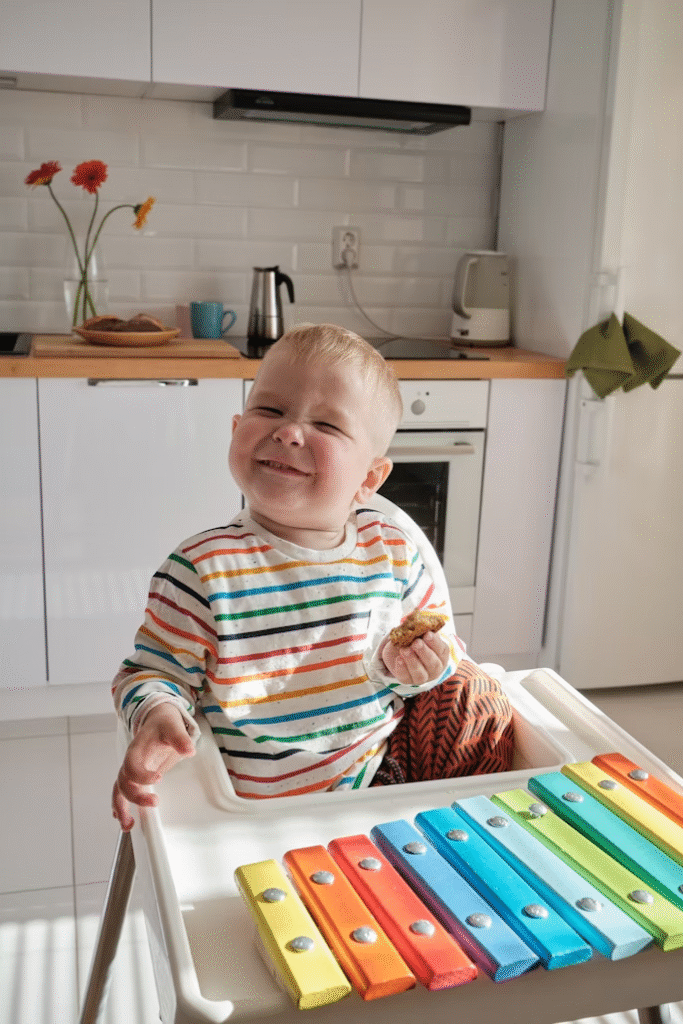How to Play With Kids (Even If You’re Not Sure How)
Let’s be honest: sometimes playing with kids feels harder than it should. You sit down, try to get into their world, and suddenly you’re “the monster,” but you’re not sure what that means, and they’re already moving on to the next thing. If you’ve ever felt out of your depth trying to play with a toddler or a preschooler, you’re far from alone.
The good news is: it’s not about doing it perfectly. Kids don’t need complicated games or Pinterest-worthy craft ideas. What they really want is your attention—and a willingness to be silly, curious, and a little bit present.
Here’s a breakdown of what’s worked for me (and plenty of other tired but well-meaning adults).

1. Let Them Run the Show
If there’s one golden rule of playing with kids, it’s this: follow their lead. They’re not looking for you to plan an activity like it’s a summer camp. They just want you to jump into what they’re already doing.
Sometimes that means pretending to eat invisible spaghetti off a plastic plate. Other times it’s stacking the same blocks over and over while they knock them down. Go with it.
If you’re not sure where to start, just say:
“Can I play too?”
That question alone gets you halfway there.
2. Don’t Fake It—Be Real
You don’t have to pretend you’re having the time of your life playing pretend tea party for the sixth time today. Kids are intuitive; they’ll sense if you’re bored or distracted. But you also don’t need to be wildly enthusiastic. Just be honest. Be engaged.
Ask questions like:
- “Why did the dinosaur do that?”
- “Can I try it your way?”
- “What happens next?”
Even if you’re not ‘into’ the play, showing curiosity about what they care about is what matters most.
3. Get on Their Level (Literally)
Sit on the floor. Lay on your belly. Crawl under the table. Wherever they are—physically and mentally—try to meet them there.
When kids see adults crouching down or making eye contact at their height, it signals that you’re actually paying attention. You’re not just watching from the couch while scrolling your phone.
Even small kids notice the difference.
4. Let Play Be Messy (and Loud)
Play doesn’t always look like a clean, peaceful moment straight out of a parenting magazine. Sometimes it’s noisy, chaotic, or just plain weird.
That’s okay. In fact, it’s healthy.
Whether they’re banging pots and pans, making mud pies, or creating a blanket fort that takes over the living room, remember: it’s the process, not the outcome, that matters.
If you can, let go of the need to keep things tidy while they’re in the middle of being creative.
5. Repetition Isn’t Boring to Them
Yes, you might read the same book twelve times in one afternoon. Or they’ll want to play the same made-up game every night before bed. That’s not laziness or a lack of imagination—it’s comfort.
Repetition is how kids learn, how they feel safe, and how they deepen connection.
So even if your brain is begging for variety, try to see it through their eyes. It’s their way of saying, “This makes me feel good.”
4. Let Play Be Messy (and Loud)
Play doesn’t always look like a clean, peaceful moment straight out of a parenting magazine. Sometimes it’s noisy, chaotic, or just plain weird.
That’s okay. In fact, it’s healthy.
Whether they’re banging pots and pans, making mud pies, or creating a blanket fort that takes over the living room, remember: it’s the process, not the outcome, that matters.
If you can, let go of the need to keep things tidy while they’re in the middle of being creative.
5. Repetition Isn’t Boring to Them
Yes, you might read the same book twelve times in one afternoon. Or they’ll want to play the same made-up game every night before bed. That’s not laziness or a lack of imagination—it’s comfort.
Repetition is how kids learn, how they feel safe, and how they deepen connection.
So even if your brain is begging for variety, try to see it through their eyes. It’s their way of saying, “This makes me feel good.”
7. When in Doubt, Go Outside
Fresh air works wonders. If you’re feeling stuck, bored, or burned out from indoor play, take it outside—even if just for ten minutes.
Let them lead the way. Look for bugs. Collect leaves. Play “I spy.” Kick a ball around. Or just sit and talk while they explore.
Outside is the original playground. You don’t have to invent anything. Nature does most of the work.
Final Thoughts
Playing with kids doesn’t require a script or a plan. It’s more about presence than performance. You don’t have to be perfect. Just be willing to show up, be a little silly, and let go of your adult expectations.
Even if you’re not sure you’re doing it “right,” the fact that you’re trying already means more than you realize.

No responses yet